If you’ve read any of my other books, you know that I’m essentially a people photographer who does a great deal of beauty and glamour work. Within that realm, my clients trust that I will pull out all the stops to make them look better than they do in real life. I do my best not to disappoint, a quest that has led me to try lighting scenarios that most shooters might never think about.
Now, you might look at this image and say, “What’s so special about this? This is just clamshell lighting.” You’d be right. There’s nothing inherently special about it. It’s two strip lights, one over the other, evenly powered, with me shooting through the middle. The same thing has been done many times with larger softboxes or different combinations of modifiers. The main thing that makes this image different from what I’m about to show you is its expense. Add to the cost of two strobes the generator and two strip softboxes—it’s obviously an investment.
Well, you can make an investment of about 
![]() of the cost and arrive at pretty much the same result. Buy two 48-inch fluorescent shop lights, the kind that hold two tubes each. You’ll probably have to buy the lights separately. Fluorescent tubes come in a variety of color temperatures—cool white, warm white, etc. Any type of bulb will work; just make sure that all four bulbs are the same.
of the cost and arrive at pretty much the same result. Buy two 48-inch fluorescent shop lights, the kind that hold two tubes each. You’ll probably have to buy the lights separately. Fluorescent tubes come in a variety of color temperatures—cool white, warm white, etc. Any type of bulb will work; just make sure that all four bulbs are the same.
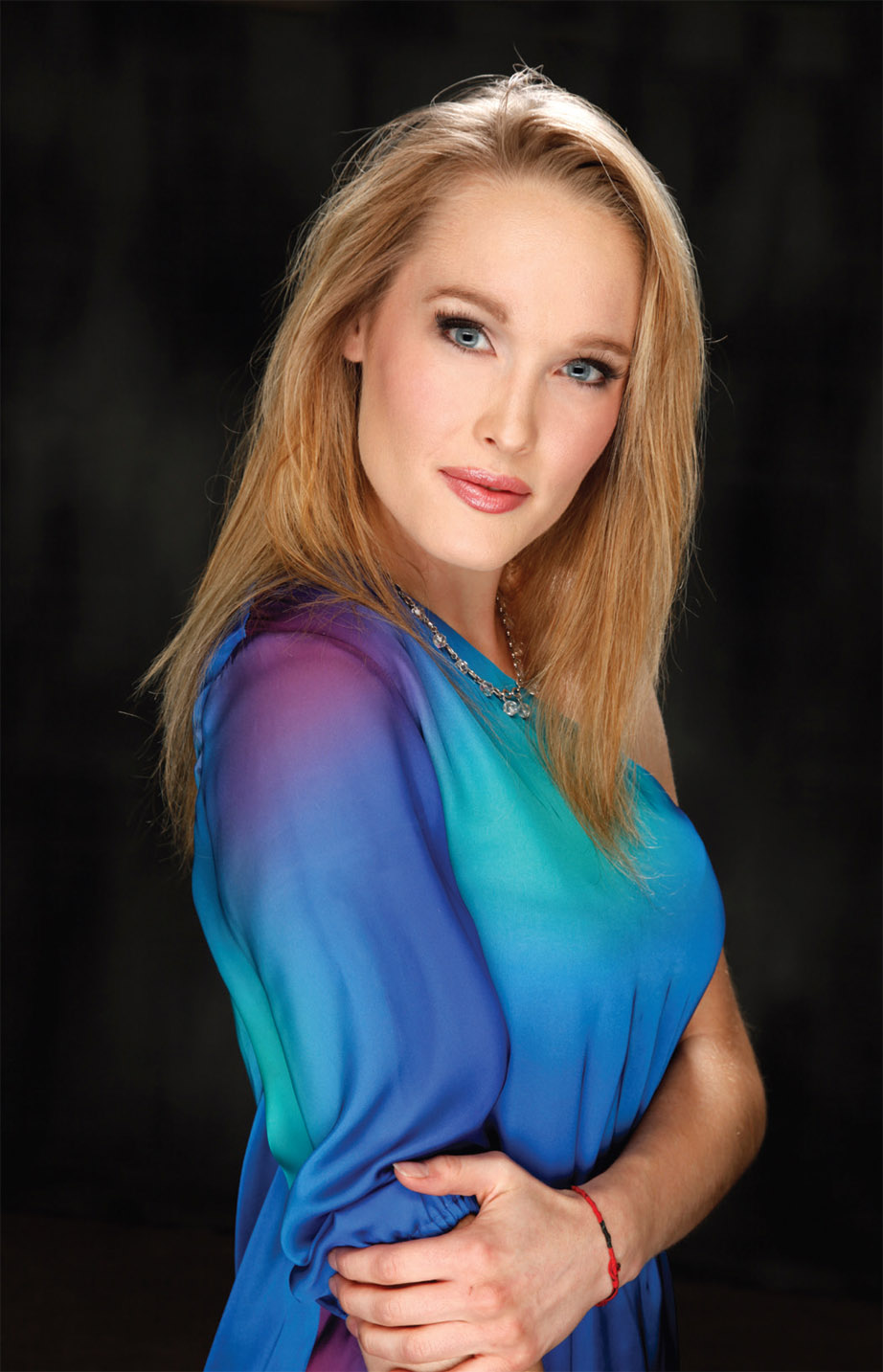
A costly clamshell lighting setup.
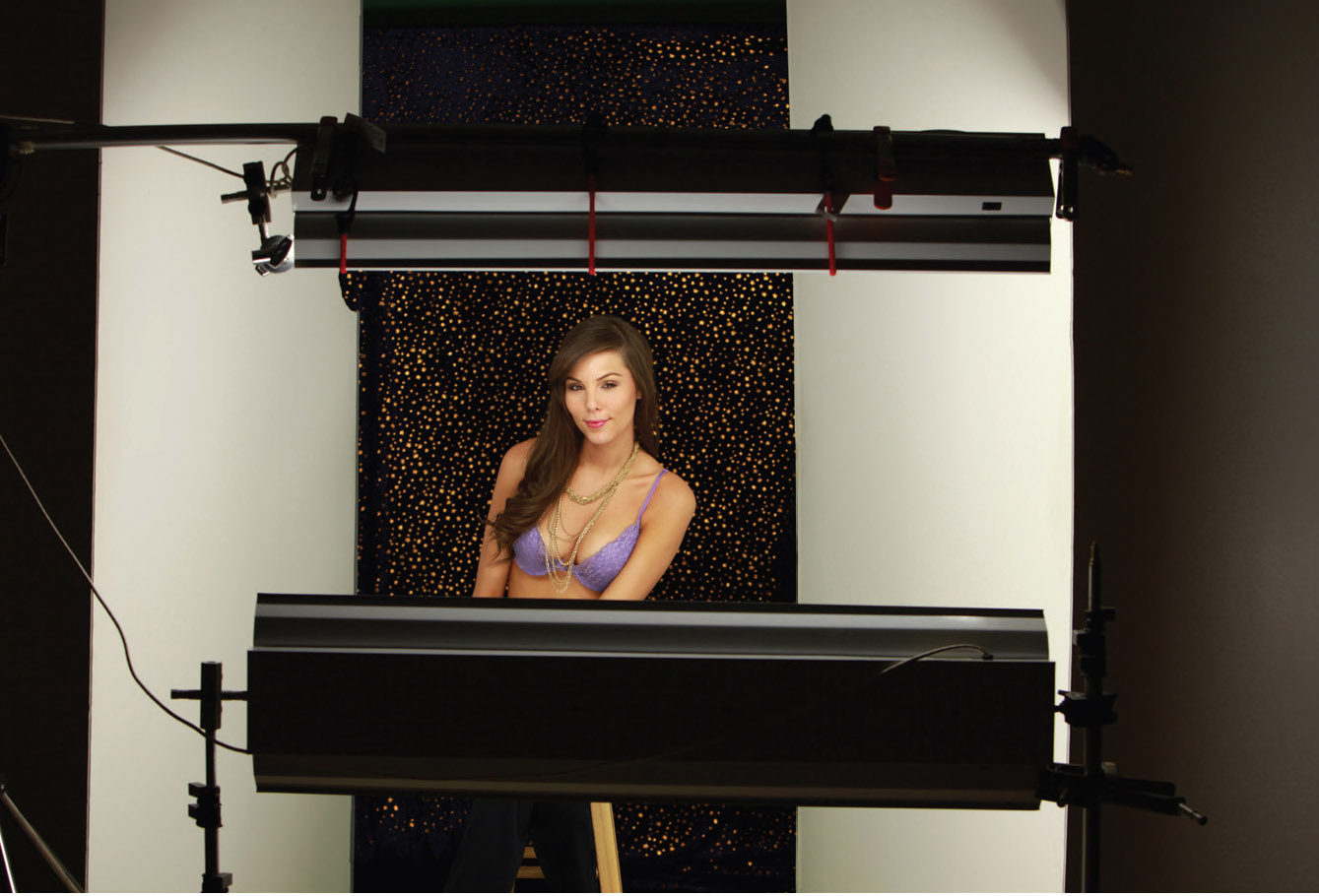
Simple but effective. Two banks of fluorescent lights beautifully light my model.

Moving her close to the background means the rate of falloff is decreased.
The units aren’t particularly heavy, but they are awkward, and the toughest part of this exercise will be figuring out how to mount them. My upper unit was secured to a boom arm with bungee cords while the lower unit was attached to a light stand on each side. Depending on how your fixtures are built, you might have to be creative in how they’re attached. Even if you have to buy a couple of specialized lighting tools or supports, you’ll still be financially way ahead of the game.
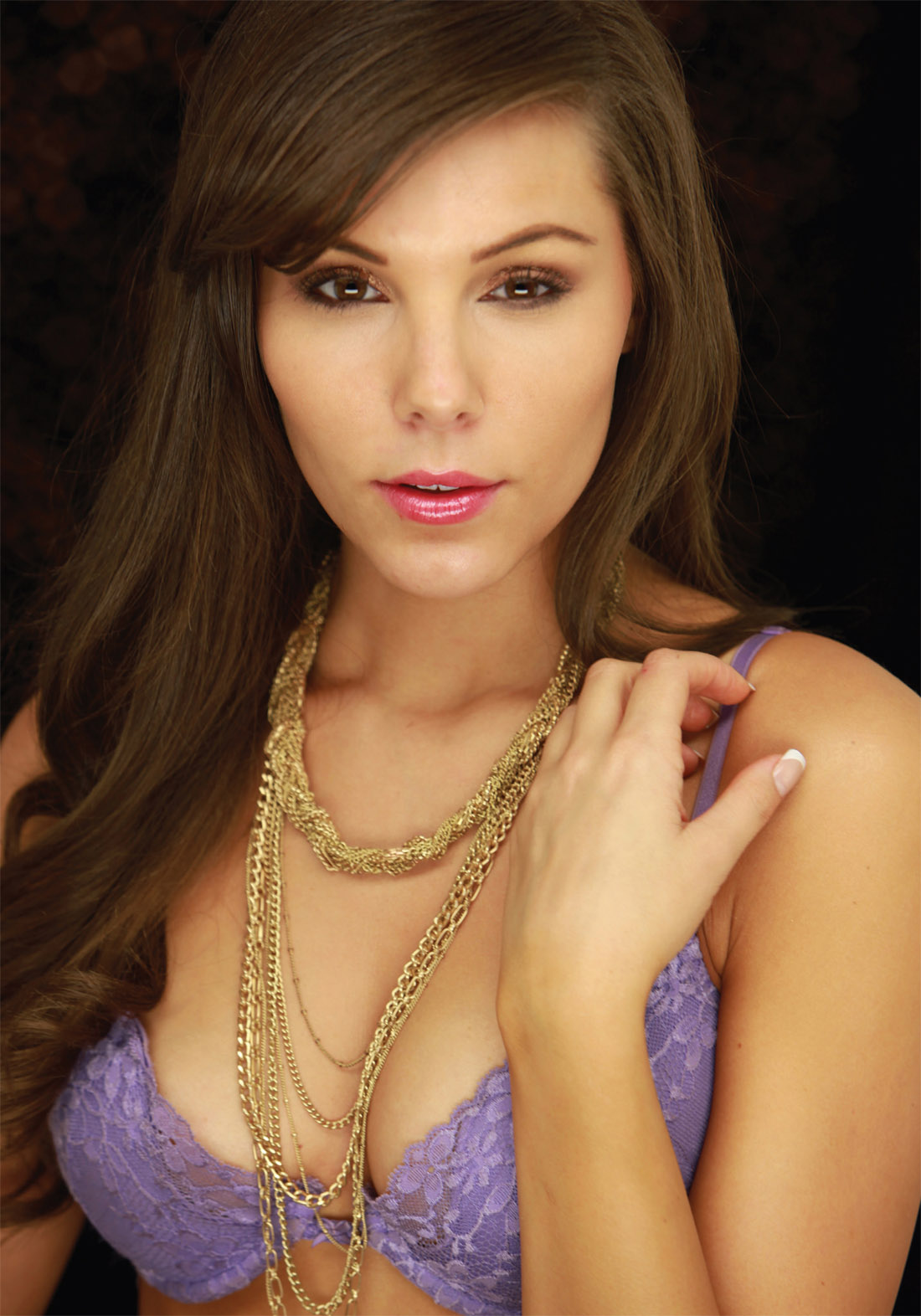
When the model moves close to the lights, the background becomes dark and unreadable.
Be sure to do a custom white balance before bringing your subject to the set. Don’t trust the fluorescent setting on the camera—it is set for a generic color balance that will probably be different from what you’re actually working with. Don’t trust Auto, either.
Bring your subject up close. The background will be darker because the light has fallen off faster—that’s the pesky Inverse Square Law at work.
Move the subject toward the background and meter again. Because the rate of light falloff has been decreased, more of the background is evident. This principle holds true no matter what your light source might be. The laws of physics are at play, you know.
I’d be totally remiss if I didn’t tell you about my latest hardware store find.
While looking for an efficient fluorescent unit that I could use for video as well as stills, I was stopped in my tracks by a six-lamp, 48-inch unit that uses only 32-watt fluorescent bulbs but manages to output almost 18,000 lumens!
I bought three of them along with two boxes of ten T8 (an important designation) lamps. Also, the lamps were of a color temperature they call “natural.” They are available in “warm” and “daylight” also, but the former is too yellow and the latter too blue to be mixed with other sources, although one could use them by themselves after a custom white balance. “Natural” is impressively close to natural daylight, so close that the two can be used together.
These units are quite lightweight and generate little heat. If they have a downside it’s that they don’t come wired with a plug. That’s an easy fix but it will be up to you to do it. Don’t let that deter you. My final cost per unit was around $120 and worth every penny.
If you can’t find one at your local hardware store, check out www.lampsplus.com. They offer free shipping for many of thier products.
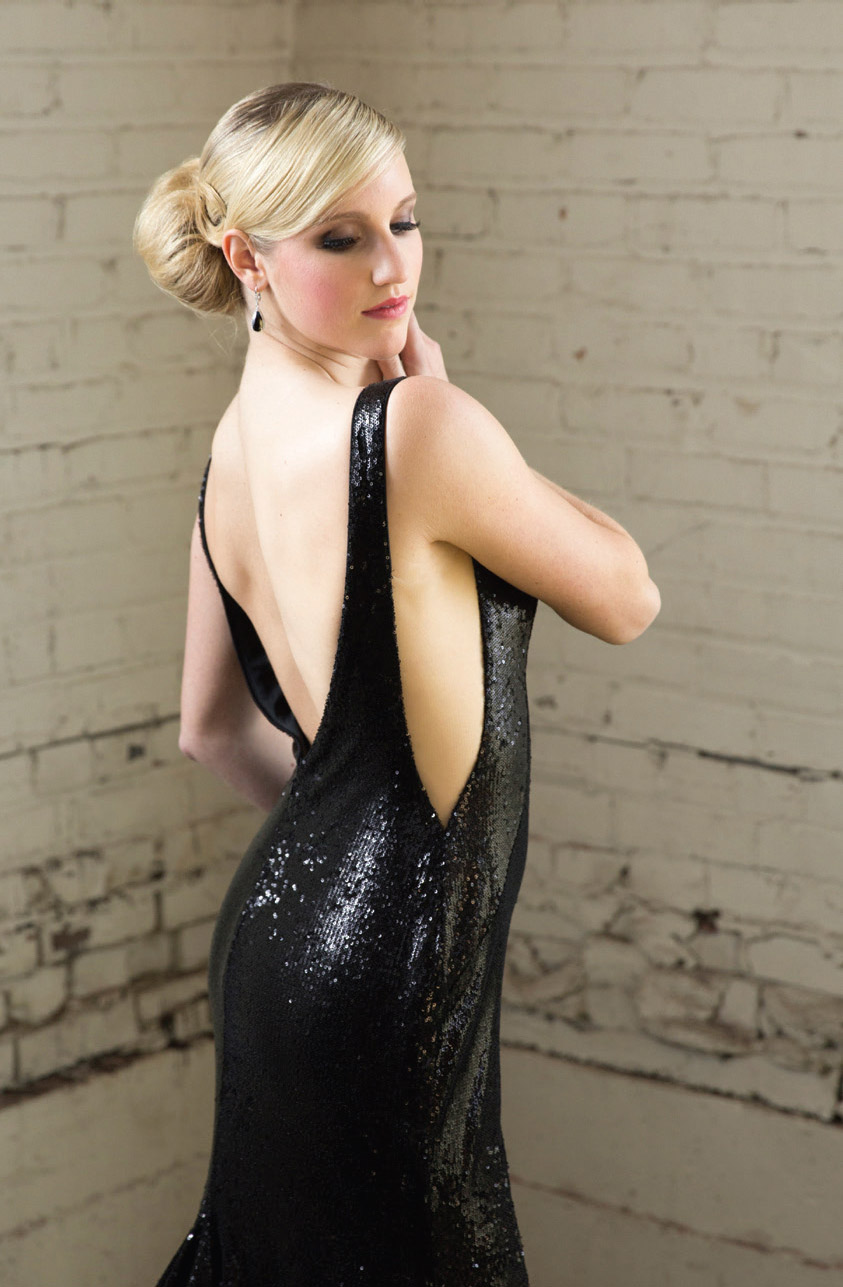
My studio partner and I shared one of these units at a recent photo/video shoot. The fluorescent light is to camera right, while natural daylight is to camera left. (Photo by Rebecca Phan, CoR Commercial)
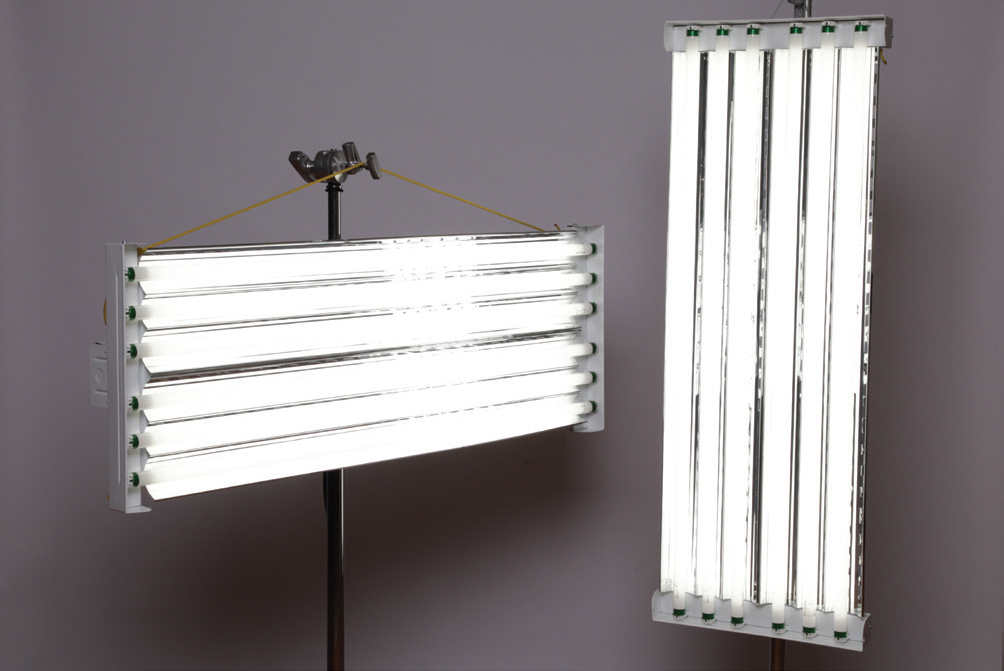
These units are bright, not too heavy, and don’t flicker.